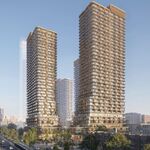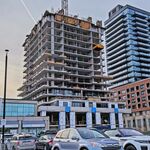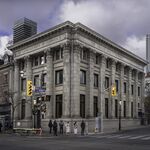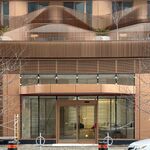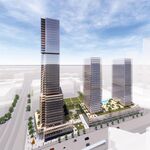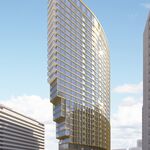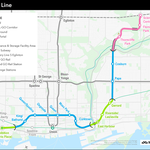Whenever transit items come up for debate at Toronto City Council, there's bound to be a healthy mix of, "That's sensible"; "I'm not too sure where he's going with this"; and "Huh?" Yesterday's Council session lived up to its reputation for scatterbrained thinking on transit. While there was certainly plenty of positive news for transit advocates, there were still plenty of comments and vote results to leave those same advocates scratching their heads.
Let's start with the Relief Line. As we wrote last month, City Staff are officially recommending the Carlaw alignment through Leslieville as the preferred alignment for the Relief Line. As expected, this change was approved by Council. This is good news for Relief Line advocates, as no new major roadblocks were thrown up in the Relief Line's path. There was also some firm movement forward, with Council voting to "advance the planning and design of the Relief Line South based on the recommended alignment and report to City Council, when a Class 3 cost estimate and schedule has been developed for the project, which is anticipated to be in the fourth quarter of 2019."
The fact that it will take another two and half years to get to that all-important cost estimate (and subsequent Council vote) will mean that Relief Line advocates will have to be very patient in the meantime.
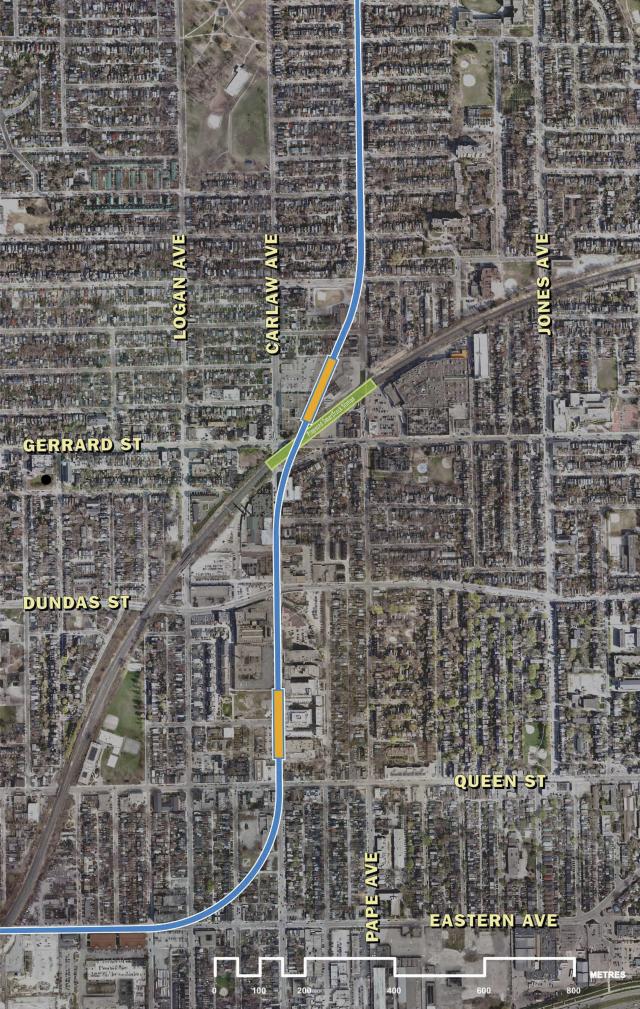 New recommended Relief Line alignment, approved today, image courtesy of the City of Toronto
New recommended Relief Line alignment, approved today, image courtesy of the City of Toronto
As with any Council session, the waters soon became a bit muddied. A recent Metrolinx report again stated that the Relief Line North, from Pape and Danforth to Don Mills and Sheppard, would be the only way to attract significant numbers of riders away from the over-capacity Yonge Line, so Council has begun to talk about the next extension to follow the initial phase. These studies have identified this corridor as a heavy rail (subway) corridor, not an LRT corridor.
However, a motion moved by Councillor Mihevc (Ward 21, St Paul's) to study the potential of "building a subway or LRT as part of the Don Mills line" (another name for the Relief Line north extension), passed 34 to 9. This is the first time that an LRT along the Don Mills corridor has seriously been considered by Council since the early days of Transit City. Some fear that introducing the potential of LRT for this corridor will spur yet another Subway vs LRT debate in Council, which risks delaying this much needed line. This is certainly one to keep an eye on.
Another project that has become tied to the Relief Line is the Yonge Subway Extension. Toronto has long maintained that—at most—the two should proceed in tandem, if not have the Relief Line go first, as the current Yonge Line does not have the downstream capacity to absorb the new riders that a northward Yonge extension would bring. That was reaffirmed yesterday, with a motion passing 32 to 11 stating "That City Council reaffirm the position that it will not agree to an extension of the Yonge North subway line unless construction of the South relief line, including required improvements to the Yonge/Bloor station, has been fully funded with a firm schedule for completion. If both projects proceed concurrently, the relief line must be in operation prior to the opening of the Yonge north extension."
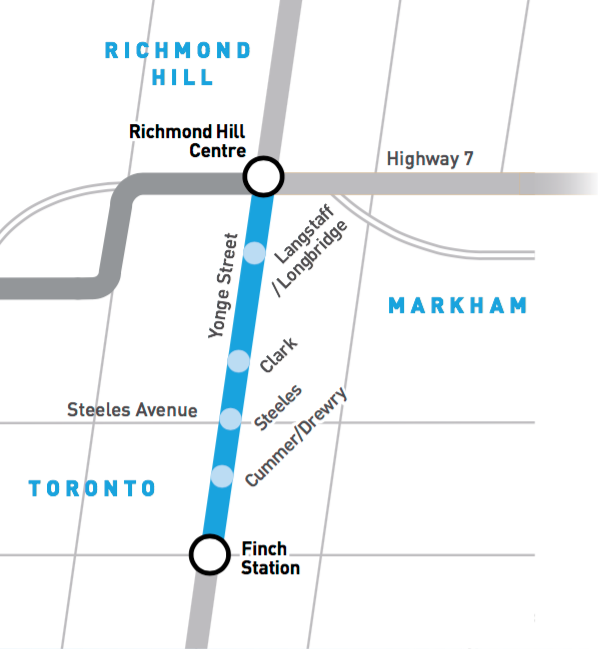 The Yonge Subway Extension, image courtesy of York Region
The Yonge Subway Extension, image courtesy of York Region
As far as advancing work on the Yonge Subway Extension, the motion as passed by Council states that the City and its partners will "advance the planning and design of the Yonge Subway Extension at no financial cost to the City and report to City Council at the next decision gate with a Class 3 cost estimate and schedule, anticipated to be in the fourth quarter of 2019." The "at no financial cost to the City" is an interesting stipulation that was added, as it places the onus squarely on Metrolinx and York Region to advance the planning and design of that extension. There was a motion put forward by Councillor Matlow (Ward 22, St Paul's) to stop planning work on the extension entirely, but that was defeated 6 to 37.
Just when sensible solutions were starting to emerge, another curveball. A motion put forward by Councillor Colle (Ward 15, Eglinton-Lawrence), which passed 42 to 1, positions "the expansion of Yonge-Bloor interchange station as a priority project for Toronto City Council and for Provincial and Federal Funding." This motion is puzzling, as previous cost estimates for increasing capacity at Bloor-Yonge have gone as high as $1 billion. It could easily be argued that this funding would be far more useful going towards a project like the Relief Line, which would divert passengers away from Bloor-Yonge instead. There was no specific wording in the motion to include a cost-benefit analysis of expanding Bloor-Yonge versus a longer Relief Line.
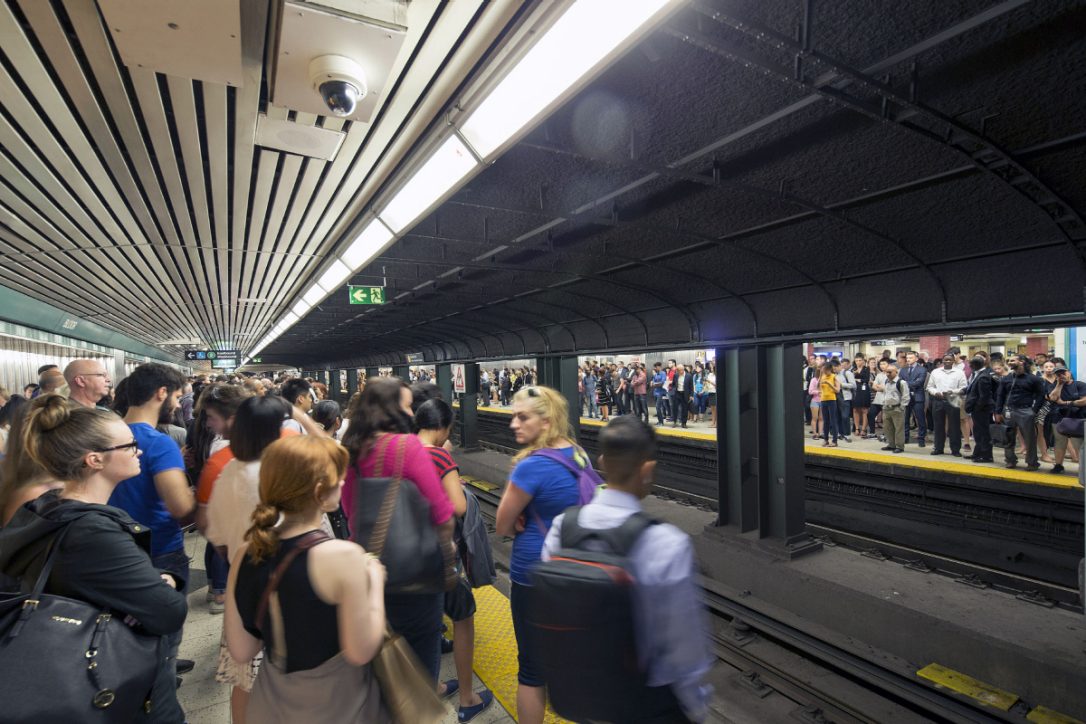 A crowded Bloor-Yonge Station, which could be relieved by the Relief Line, image courtesy of the Toronto Star
A crowded Bloor-Yonge Station, which could be relieved by the Relief Line, image courtesy of the Toronto Star
In a lighter moment, Councillor Mammoliti (Ward 7, York West) used a good chunk of his allotted time to complain about dirty streets and parks in disrepair in his ward. (Isn't that what he was elected to look after?) A few sentences later, he repeatedly decried downtowners as "whiners."
It wouldn't be a Toronto Council transit debate without the possibility of extending the Sheppard Subway popping up. This time, some golden moments were tied to a motion which read that the City "prepare a cost benefit analysis between the "downtown" relief line and the Sheppard Subway Extensions to Scarborough and the "North York relief line" (so dubbed by Councillor Pasternak) between Sheppard-Yonge and Sheppard West stations. Councillor Shiner (Ward 24, Willowdale) best summed up the support for such extensions saying: “I was elected to make political decisions, not necessarily fact-based decisions. I could get a computer to do that.” And finally, Councillor Karygiannis (Ward 39, Scarborough-Agincourt) who stated "I'm having difficulty having a Relief Line from Pape to downtown when we're not looking at relief lines on Sheppard."At the end of the day, he was the lone vote in opposition to the amended transit motion, which carried 42 to 1. Just another day of scrambled transit priorities at Council.

 1.9K
1.9K 












